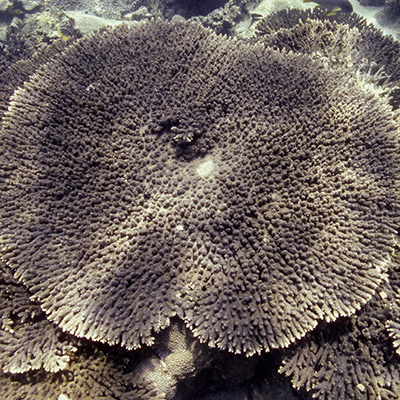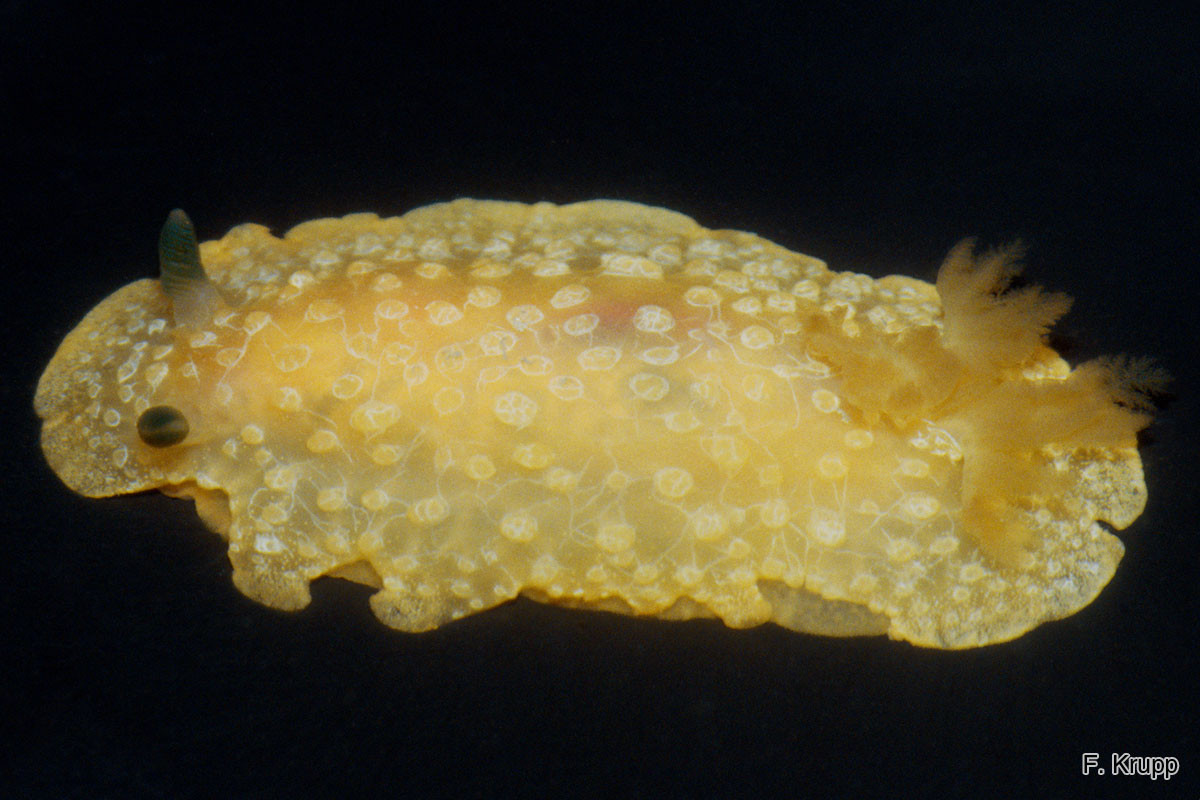Name: Doriopsilla nigrocera
Common name: Creamy Nudibranch
Local name:
Scientific name: Doriopsilla nigrocera
Classification: Class – snails and slugs; order – nudibranchs, sea slugs; family – dendrodoridids (Dendrodorididae)
Size: The animals of this species are commonly 25 mm in total length.
Habitat:
The Creamy Nudibranch can be found from the intertidal zone, where it lives on or under rocks at low tide, to depths of 20-30 m. It is a food specialist and feeds exclusively on sponges. Lacking teeth and jaws, it consumes its food using a long oral tube that is inserted into the sponge: digestive enzymes secreted by two special glands in the mouth are poured into the prey; subsequently the externally digested sponge tissue is sucked up into the mouth. Its appearance is mimicked by a sea snail, Triviella millardi that has its shell usually completely covered with its yellowish and white-streaked mantle, thus imitating the nudibranch's strategy of deterring fish predators.
Distribution:
This species occurs in the tropical and subtropical Indo-West Pacific. It is known from the eastern coast of Africa, the Red Sea, India, Papua New Guinea, Hong Kong, temperate Australia and north to Japan, but is a rather rarely reported species in the Arabian Gulf.
Conservation status:
Doriopsilla nigrocera has not yet been assessed for the IUCN Red List of Threatened Species.
Description:
Doriopsilla nigrocera is a smooth-bodied sea slug of the marine gastropod order Nudibranchia, which means “naked gills” and refers to the fact that the adult forms have externally exposed respiratory organs, because they lack the spirally coiled shell and the mantle cavity typical of other mollusks. The mantle itself is reduced to the dorsal body wall that covers the visceral mass and internal organs. The flat, fleshy underside of the animal contains the foot, which is a single massive muscular organ used for locomotion and in this species it is sharply and nearly equally rounded at both ends. The body is oval and much depressed, the mantle scattered with rounded tubercles of nearly equal size, becoming smaller towards the margin. Clearly visible structures on the dorsal surface are the external gills near the rear end of the body, which are shaped as five branchial plumes forming a cluster (two in front and three behind) around the anus. They are large and feathery when expanded and can be retracted into a common pouch for protection. The head is very indistinct, indicated by an arched ridge immediately in front of the foot, and produced into small lateral lobes. The mouth is minute and toothless, as it lacks jaws and a radula, the rasp-like structure characteristic of other mollusk groups. The most prominent part of the head is a dorsal pair of feeler-like protrusions that are aptly named rhinophores, meaning “nose-bearers”, because they are chemosensory organs that detect smell and taste from substances dissolved in the water.
As in the majority of nudibranchs, the distinguishing characteristic of this species is its coloration pattern. The body color is creamy yellow. The gills are ochre and darker than the dorsal surface. The rhinophores are charcoal black, which distinguishes this species from its congeners.








